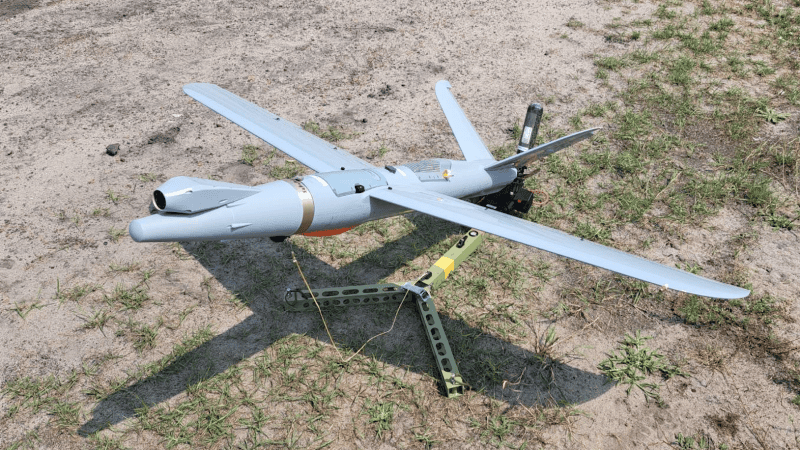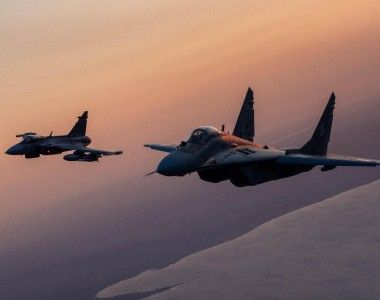WB’s Anti-Tank Warmate Loitering Munitions Tested. Weapon for Fighting Russian Tanks

Photo. WB Group
The WB Group has tested a new anti-tank warhead for the Warmate loitering munitions. Developed in collaboration with the Military Institute of Armament Technology, this new warhead will significantly improve the effectiveness of targeting armored vehicles. Defence24.pl received detailed information about the testing process.
The testing series was conducted in both static conditions (with the warhead alone) and dynamic conditions (with the loitering munition attacking a selected target). The tests were carried out under various weather conditions, including very challenging ones involving strong crosswinds and precipitation. The goal was to assess the functioning and proper formation of the shaped-charge jet during attacks from different angles.
Despite some changes in the warhead’s shape and sensor placement compared to previous versions, the Warmate munitions hit within the “acceptable standard for this type of weapon” CEP coefficient. This means a circular error in which 50% of the shots aimed at the target’s center should land within a defined radius. The images received by the editorial team show the formation of the jet after penetrating different types of targets and obstacles, including the effect on the ground.

Photo. Grupa WB

Photo. WB Group

Photo. WB Group
The warhead weighs approximately 2 kg and has a penetration capability exceeding 300 mm of RHA (Rolled Homogeneous Armor thickness). This significantly enhances its ability to destroy vehicles and other armoured targets. For Soviet-era technology-based tanks, this penetration greatly increases the likelihood of their destruction, especially when attacking the rear, sides, or top of the vehicle.
An attack on an armored target will also be effective even if it is not performed vertically from above (which increases the likelihood of armor penetration). There is also a higher chance of destroying the target with a direct frontal attack. This warhead will also be highly effective against various other vehicles (infantry fighting vehicles, armored personnel carriers, support vehicles, and specialized vehicles).

Photo. WB Group

Photo. WB Group

Photo. WB Group
The new warhead could further enhance the system’s utility and versatility, as well as increase global interest. Warmate is currently produced in large quantities. According to the manufacturer, around 5,000 units of this loitering munition have been produced in the last several months. Various warheads or reconnaissance heads can be easily attached to each such device. It is worth noting that despite its distinctive shape and sensor placement, the new cumulative warhead is fully interchangeable with the legacy warheads. Therefore, it can be easily attached without requiring modifications to the loitering munition itself. The Warmate system is used in combat conditions in Ukraine, by Polish Territorial Defense Forces, and by at least one NATO country (reportedly Turkey), as well as Georgia and India. Recently, the Republic of Korea also purchased it.



